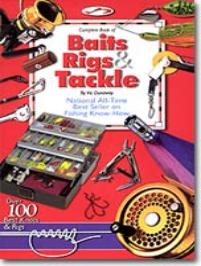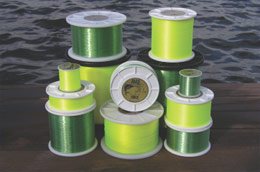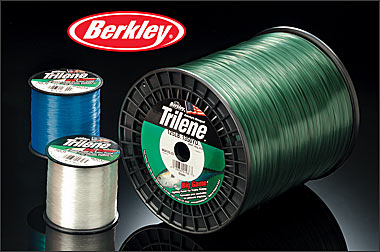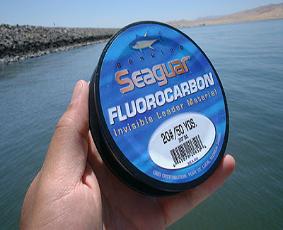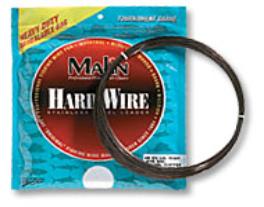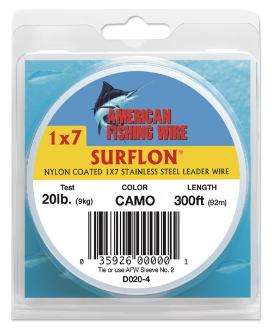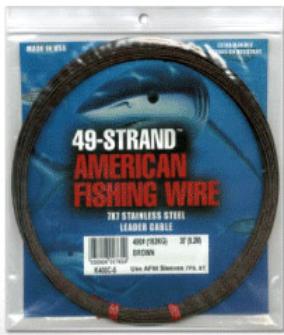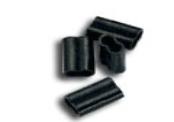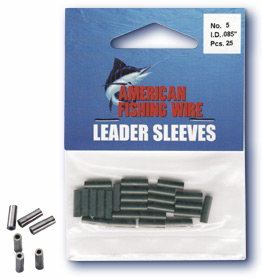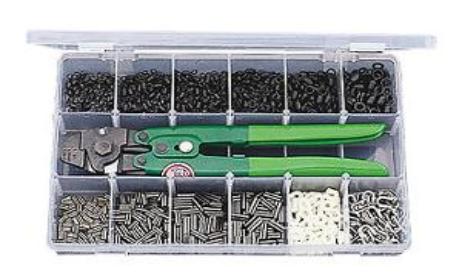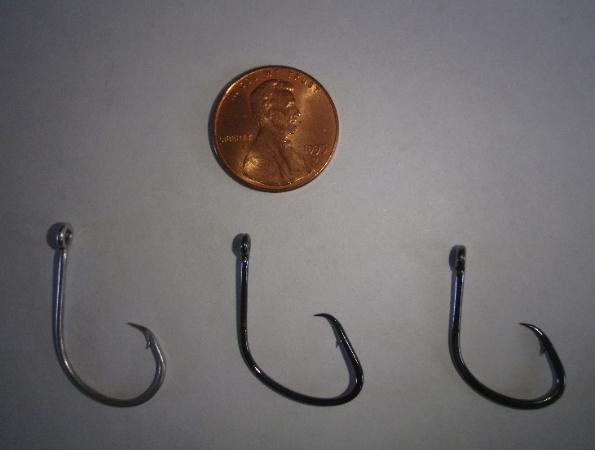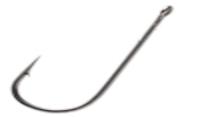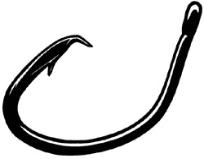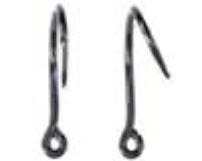Rigging Saltwater Baits
and Artificial Lures
Destin Fishing Guide
and Artificial Lures
Destin Fishing Guide
| IF YOU ARE JUST STARTING OUT IN SALTWATER FISHING, YOU NEED TO READ THIS PAGE FIRST. ALSO, I WOULD RECOMMEND YOU BUY THIS BOOK, BAITS, RIGS, AND TACKLE, BY VIC DUNAWAY. I CONSIDER THIS BOOK THE BIBLE FOR SALTWATER RIGGING. MOST TACKLE STORES, WAL MART, AND ALL THE ONLINE FISHING STORES HAVE IT. TERMINAL RIGGING BASICS The purpose of a terminal saltwater fishing rig is to: - present your bait within range of your target fish so that he will notice it, - to make your bait so appealing that the target fish will want to eat it, - and hook and keep the target fish on the hook so you can bring him in. Terminal saltwater fishing rigs are designed to do this and vary with the: - Type of bait used -- Live bait -- Dead bait -- Artificial Lures mimicking live bait - The location in the water column you are fishing in - The type of fish you are targeting. Just like the popular WHATABURGER here in the south, there are probably over 10,000 differents rigs out there that will do this. You will be quickly overwhelmed with the variety and wonder if your rig is perfect for the fishing you are doing. My advice is to relax and just stick with the basics, they all catch fish if you: - put the right bait (what ever bait they are looking for) - at the right location (where ever the fish are) - at the right time (when the fish are hungry). So, let's get started................ STEP ONE: YOU NEED TO GET YOURSELF A RIGGING BAG AND STOCK IT WITH THE BASIC RIGGING MATERIALS. 1. LEADER MATERIAL 2. HOOKS 3. WEIGHTS 4. PLASTIC BEADS 5. FLOATIES 6. SWIVELS 7. NEEDLE NOSE WIRE PLIARS 8. CRIMPING TOOL AND CRIMPS 9. BAG TO HOLD EVERYTHING IN Now, to explain all this................... 1. LEADERS Although not required for all saltwater fish, most people use a leader. The leader is the part of the line that you attach your terminal tackle to. The purpose of a leader is to: - present the bait to your fish in a natural setting (i.e., invisible to the fish) - prevent the fish from breaking or cutting the line once hooked, either by their own teeth, their weight, shock of striking the bait, or by obstacles in the water around them (coral, rocks, pilings, your boat propeller, etc). There are three basic materials used around Destin for leaders: monofilament, flurocarbon, and wire. - Monofilament line: Cheapest way to go and works good in most cases. It stretches and will absorb the shock of a fish hitting your bait, and is usually pretty flexible, resulting in a natural presentation of your bait. Normally, you want to use double or triple whatever main line you are using. For example, if your main line is 10 lb test, go with a 20 or 30 lb leader. Brands vary, I normally use Ande only because it is available here, comes in different colors, and comes in large rolls. For more information on monofilament line, go to the following links: Florida Circle hook ruleshttp://myfwc.com/marine/GearRules/index.htmhttp://www.mels-place.com/Contents/ABCs_and_Go odies/Line_Diameters/line_diameters.htm - Fluorocarbon Leader: Supposed to be invisible in water as it is said to match the refractive index of water. You will find it stiffer than monofilament and is more abrasion resistant to teeth and cutting. It is heavier than water and will not float. On the minus side, it is more expensive than monofilament. A variety of brands are available. I normally use Seaguar mainly because it is again readily available. They are also the company that first came out with fluorocarbon. For more information on Fluorocarbon, click the following links: http://www.seaguar.com/ http://www.tackletour.com/reviewfluorocarbon2.html http://www.saltwatersportsman.com/article.jsp?ID=21012130 http://www.charkbait.com/article/2007/FLuorocarbon1.htm http://www.tackletour.com/reviewseaguar.html http://www.tackletour.com/reviewplinefluroclear.html http://www.alamoflyfishers.org/node/178 - Wire/Cable: Used when going after fish with teeth: sharks, mackerel, wahoo, etc. On the minus side, it is more visible than either mono or fluorocarbon and is stiffer. Also, sometimes you will need a shock leader (monofilament normally) to absorb the shock of when a fish hits your bait at a million miles an hour. There are two main types of wire used, single strand and multi strand. Each have their advantages. Single Strand Wire: Used for smaller toothy saltwater fish like spanish mackerel, king mackerel, blue fish. It is very thin and you need no special tools other than a pair of needle nose wire pliars to rig it. The is used to fasten it to your lure, hook, or swivel. I normally use the copper colored Malin hard wire. It is readily available around here and comes in various diameters. MALIN HARD WIRE VARIETIES AVAILABLE .012" DIAMETER 31 LB TEST #3 wire $1.49 .013" DIAMETER 40 LB TEST #4 $1.49 .014" DIAMETER 43 LB TEST #5 $1.69 .016" DIAMETER 61 LB TEST #6 $1.79 .018" DIAMETER 80 LB TEST #7 $1.99 .020" DIAMETER 93 LB TEST #8 $1.99 .022" DIAMETER 108 LB TEST #9 $2.19 .024" DIAMETER 131 LB TEST #10 $2.49 .029" DIAMETER 180 LB TEST #12 $2.49 The big problem with using single strand wire is that it is not very flexible and tends to kink with big lures. Once kinked, you need to change it. Multi Strand Cable: The advantage of Multi strand stainless steel cable is that it is more flexible than single strand wire and thus you can rig larger baits and have a better action on the bait. A disadvantage of cable is that it is larger than single strand and thus more visible. I normally used American Fishing Wire. The two main types of cable are the 7 strand cable (made from 7 individual wires twisted together), and the 49 strand cable (made from seven 7 strand cables twisted together). The 7 strand cable is normally coated with nylon and the 49 strand is normally uncoated. Cable is normally used to make leaders for the heavier lures such as a Yozuri bonito, etc. AMERICAN FISHING WIRE VARIETIES AVAILABLE SEVEN STRAND COATED WIRE DIAMETER INCHES POUND TEST AFW SLEEVE 0.020" 30 LB # 2 0.024" 40 LB # 3 0.032 60 LB # 4 OR 4L 0.048" 90 LB # 7 0.058" 135 LB # 9 49 STRAND CABLE 0.036" 175 LB 7F8 or 7T 0.045" 275 LB 7F8 or 7T 0.054" 400 LB 10F7 or 10T 0.062" 480 LB 10F8 or 10T 0.072" 600 LB 14F8 or 11T 0.081" 800 LB 14F8 With multi strand wire or cable, you must use crimps and a crimping tool to make the connections between your lure and main line. Crimping tool kits with the crimper, sleeves, swivels, etc are available at most tackle stores and online. CRIMPING FISHING WIRE LEADERTEC AMERICAN FISHING WIRE 2. HOOKS There are a million and one different hooks you can use. How do you know which is for you? We need to keep it simple here and briefly explain some of the basic hooks used in saltwater fishing and why they are used. Hook choice depends on several factors. Normally you choose a hook based on what fish you are targeting and the type and size of bait you are using. Hooks are numbered by their size. The smallest hook is a size 32 and as the number decreases to one, the hooks get bigger. Once you get down to a size one hook, they start back up the numbers but add a zero. i.e. 1/0 (pronounced as one aught).The size breakdown from smallest to largest looks like this: 32, 30, 28, 26, 24, 22, 20, 18, 16, 14, 12, 11, 10, 8, 6, 4, 2, 1, 1/0, 2/0, 3/0, 4/0, 5/0, 6/0, 7/0, 8/0, 9/0, 10/0, 11/0, 12/0, 13/0, 14/0, 15/0, 16/0, 17/0, 18/0, and 19/0 There is no standard sizing between manufacturers. Pictured below, from Left to Right, are a Eagle Claw 2/0 Circle Sea hook, an Owner 1/0 Mutu Light Circle Hook, and a Gamakatsu 1/0 Nautilus Circle hook. So, when you buy your hooks, you need to eyeball them and can't just go by the number size. You will be dealing with 4 basic hooks in your fishing. - J HOOKS: This is what you are probably used to and is what everyone thinks of when they think of hooks. With a J Hook, you are required to "set" the hook. - CIRCLE HOOKS: Named because it's circular shape, the circle hook is a relatively newcomer to the fishing world around Destin. It differs from the J Hook in that you do not "set" the hook, the fish will hook itself. When a fish takes your bait with a Circle Hook, it closes its mouth on the bait and turns to swim away. When it turns, the fishing line pulls on the Circle hook and the design of the hook causes the hook to hook the fish in the corner of the mouth. Just believe me, it works. The most important thing to remember when using a Circle hook is that you do not "set" the hook. Leave your rod in the rod holder and pick it up and start reeling only after the fish is hooked and the bend in the rod shows you it is hooked. Circle hooks do not normally "gut hook" a fish and are for this reason, very useful in a catch & release program. As a matter of fact, it is now both federal and state of Florida law that circle hooks must be used when ever fishing in the Gulf of Mexico for all reef fish species (Grouper, Snapper, Amberjack, Triggerfish, etc) that non-stainless steel circle hooks must be used. Florida law also stipulate that circle hooks used in state waters (out to nine miles) must be non-offset. What this means is some manufacturers will put a slight bend or offset in the hook point. To determine if a hook has an off set, lay it on a flat surface. If it lays flat, it has no offset For more information on the laws concerning hooks and other devices in the Gulf of Mexico, go to the following sites. http://sero.nmfs.noaa.gov/sf/pdfs/Discard%20Mortality%20FAQ.pdf - LIVE BAIT HOOKS - TREBLE HOOKS TO BE CONTINUED For more information on fish hooks, click on the following links: Gamakatsu hooks Owner hooks Eagle Claw hooks Mustad hooks Fish Hooks Article 1 Fish Hook Article 2 Fish Hook Article 3 |
